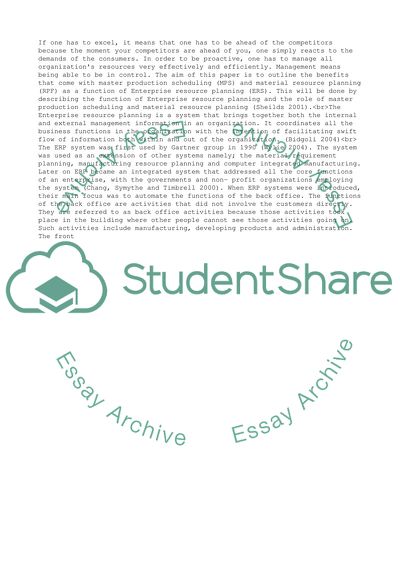Cite this document
(Enterprise Resource Planning Essay Example | Topics and Well Written Essays - 2000 words, n.d.)
Enterprise Resource Planning Essay Example | Topics and Well Written Essays - 2000 words. https://studentshare.org/management/1772318-benefits-transactional-and-bi-expected-for-the-master-production-scheduling-and-material-resource-planning-functions-of-erp-system
Enterprise Resource Planning Essay Example | Topics and Well Written Essays - 2000 words. https://studentshare.org/management/1772318-benefits-transactional-and-bi-expected-for-the-master-production-scheduling-and-material-resource-planning-functions-of-erp-system
(Enterprise Resource Planning Essay Example | Topics and Well Written Essays - 2000 Words)
Enterprise Resource Planning Essay Example | Topics and Well Written Essays - 2000 Words. https://studentshare.org/management/1772318-benefits-transactional-and-bi-expected-for-the-master-production-scheduling-and-material-resource-planning-functions-of-erp-system.
Enterprise Resource Planning Essay Example | Topics and Well Written Essays - 2000 Words. https://studentshare.org/management/1772318-benefits-transactional-and-bi-expected-for-the-master-production-scheduling-and-material-resource-planning-functions-of-erp-system.
“Enterprise Resource Planning Essay Example | Topics and Well Written Essays - 2000 Words”. https://studentshare.org/management/1772318-benefits-transactional-and-bi-expected-for-the-master-production-scheduling-and-material-resource-planning-functions-of-erp-system.


